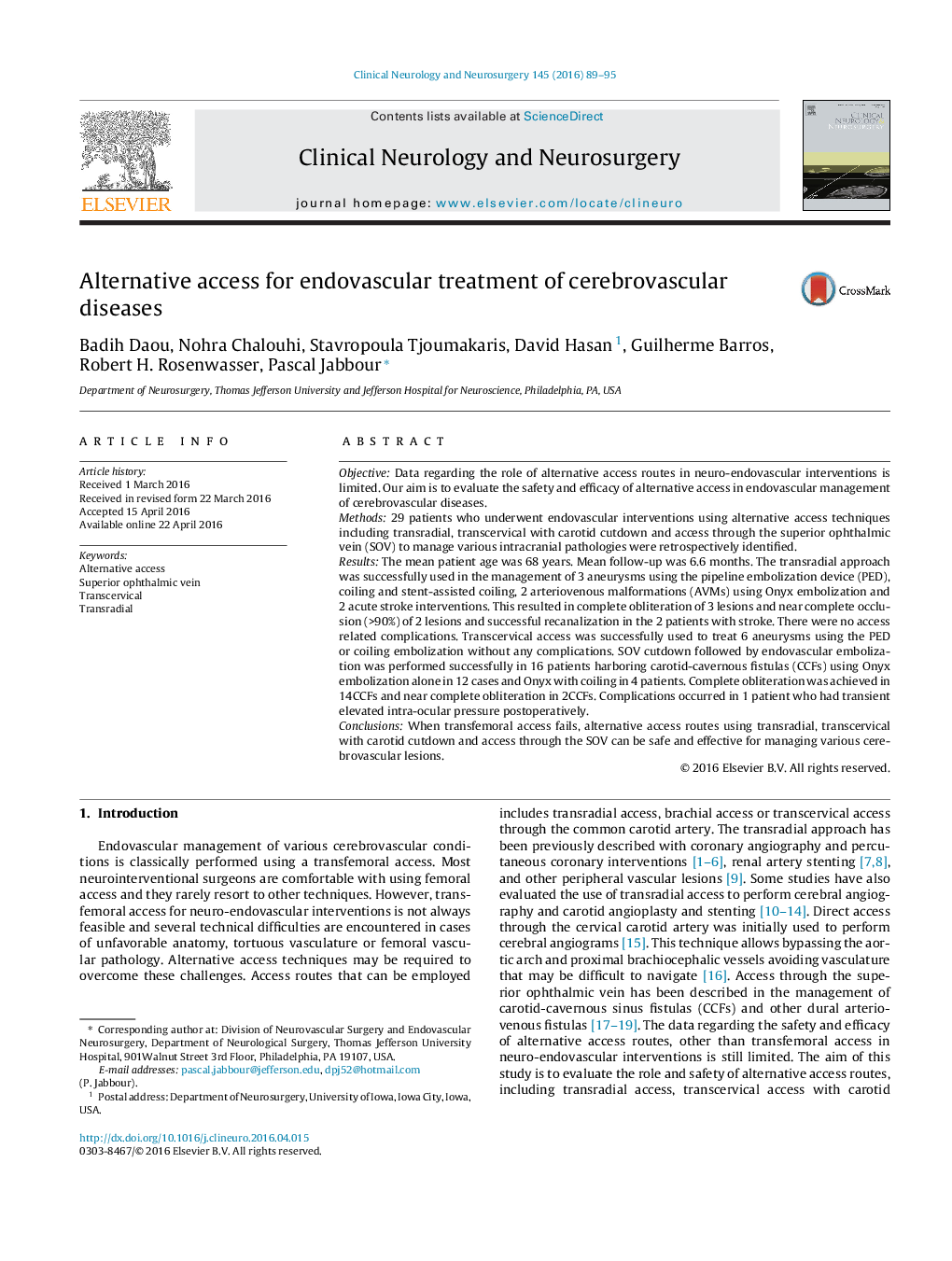| کد مقاله | کد نشریه | سال انتشار | مقاله انگلیسی | نسخه تمام متن |
|---|---|---|---|---|
| 6006392 | 1579677 | 2016 | 7 صفحه PDF | دانلود رایگان |

- Alternative access can be used when femoral access fails or is not an option.
- This can include transradial, superior ophthalmic vein and transcarotid approaches.
- These techniques are safe and effective in neuro-endovascular interventions.
- They can be used to treat aneurysms, AVMs, AVFs and stroke.
ObjectiveData regarding the role of alternative access routes in neuro-endovascular interventions is limited. Our aim is to evaluate the safety and efficacy of alternative access in endovascular management of cerebrovascular diseases.Methods29 patients who underwent endovascular interventions using alternative access techniques including transradial, transcervical with carotid cutdown and access through the superior ophthalmic vein (SOV) to manage various intracranial pathologies were retrospectively identified.ResultsThe mean patient age was 68 years. Mean follow-up was 6.6 months. The transradial approach was successfully used in the management of 3 aneurysms using the pipeline embolization device (PED), coiling and stent-assisted coiling, 2 arteriovenous malformations (AVMs) using Onyx embolization and 2 acute stroke interventions. This resulted in complete obliteration of 3 lesions and near complete occlusion (>90%) of 2 lesions and successful recanalization in the 2 patients with stroke. There were no access related complications. Transcervical access was successfully used to treat 6 aneurysms using the PED or coiling embolization without any complications. SOV cutdown followed by endovascular embolization was performed successfully in 16 patients harboring carotid-cavernous fistulas (CCFs) using Onyx embolization alone in 12 cases and Onyx with coiling in 4 patients. Complete obliteration was achieved in 14CCFs and near complete obliteration in 2CCFs. Complications occurred in 1 patient who had transient elevated intra-ocular pressure postoperatively.ConclusionsWhen transfemoral access fails, alternative access routes using transradial, transcervical with carotid cutdown and access through the SOV can be safe and effective for managing various cerebrovascular lesions.
Journal: Clinical Neurology and Neurosurgery - Volume 145, June 2016, Pages 89-95